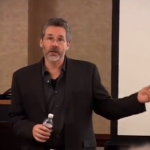 This piece is taken from a hot seat that John Carlton and Stan Dahl conducted. Harlan Kilstein is on the hot seat. He is an experienced marketer and copywriter who is trying to generate more revenue in three of his niches. You can watch this on video here:
This piece is taken from a hot seat that John Carlton and Stan Dahl conducted. Harlan Kilstein is on the hot seat. He is an experienced marketer and copywriter who is trying to generate more revenue in three of his niches. You can watch this on video here:
John’s advice:
People come in and buy multiple products from you. In a lot of markets they like to find a “go-to-guy” that they can trust. And then they may buy five or six products from you. They may never take the wrapper off of them, but “by God, when I get that weekend that I’m going to learn how to play golf I will open those and then I will learn how to golf”. They may never get around to it. That’s very common. But they get very excited about this stuff.
As with most information markets, there are people like you who get the information and run with it. But that’s very rare…a very small percentage. I know I’ve done my job with the ad when I get people very excited about wanting the product. After they order it and hang up the phone, they wipe their brow and say “Whew, I’m glad that’s over with. Now I’m going to start golfing better”. They kind of conveniently forget the part where they have to get the product, watch the video, etc.
Harlan: Like in the hypnosis market, where they make the appointment but don’t bother to come in because they thought the problem was solved.
John: Exactly. That’s what you’re dealing with in the majority of the buying decisions that are made. The ad gets you so riled up…that’s why you want to deliver the product as soon as possible. They’ll forget why they ordered it.
Harlan: you know what we did to combat that? We told him that there was something special about the ad and that they had to cut it out and bring it in to their appointment to find out what it was. They should look at it on the day of their appointment because they might discover what it was. If they didn’t discover it they should just bring the ad in with them and we would tell them what that special thing was.
John: that’s a great idea unless you have a guarantee that you used to get them over the hump of making the buying decision and you would just as soon they forgot about before they got the product in their hands.
So, as far as this goes, even if you are dealing with the hottest of the hot markets, you are dealing with a fraction of a percent of the total number of people who were going to be “direct response responsive”. But those names are hot. That’s why the direct response lists have a “hotlist”. Those names are better than the rest of the list. In case somebody doesn’t know what a hotlist is, there is a general list of people who bought golf clubs, and there is a “hotlist” of people who bought those clubs within the last 30 days. You will pay more for that list, and it will be smaller, but it will be 10 times hotter than the list in general. The list starts to deteriorate after a couple of months. That’s an important thing to know about buying lists.
That’s what’s great about the web. You can keep generating your own hotlist and you can begin tending to them almost immediately. There has to be a slight delay, though. We used to put ads right in the products that we sold, but didn’t get a great response from that. But there is a sweet spot in direct mail. I don’t know how that translates to the web yet because the jury is still out on a lot of ways to reach people. In direct mail, you generally want to mail to the list once every 21 days. That’s a lot sooner than most people think they should. You can bump it up… You can mail every seven or 14 days and you’ll earn more money but you’ll burn the list out. I’ve found that the response is similar between 28 days and 21 days, but if you mail every 21 days you get more mailings out during the year.
John and Harlan had this discussion a couple of years ago, but it is still just as true today.
If you like this lesson (and are not already a member of the Marketing Rebel Insider's Club), you will be glad to know that there is a vast library of small business marketing lessons and training programs just like this...
...plus a private Facebook-like chat stream where you can get answers to all of your
questions about marketing tools and techniques, small business growth, and life as an entrepreneur...
...which is only available to members of the
Marketing Rebel Insider's Club.
You can access all of this immediately for less than $1/day.
You will see for yourself why our members love this online club so much...
... and why they don't invest in marketing tools or strategies without first checking in with The Club.
Click Here to start your membership today.
MarketingRebelClub.com
We'll see you on the inside...
Stan Dahl & The Marketing Rebel Team
